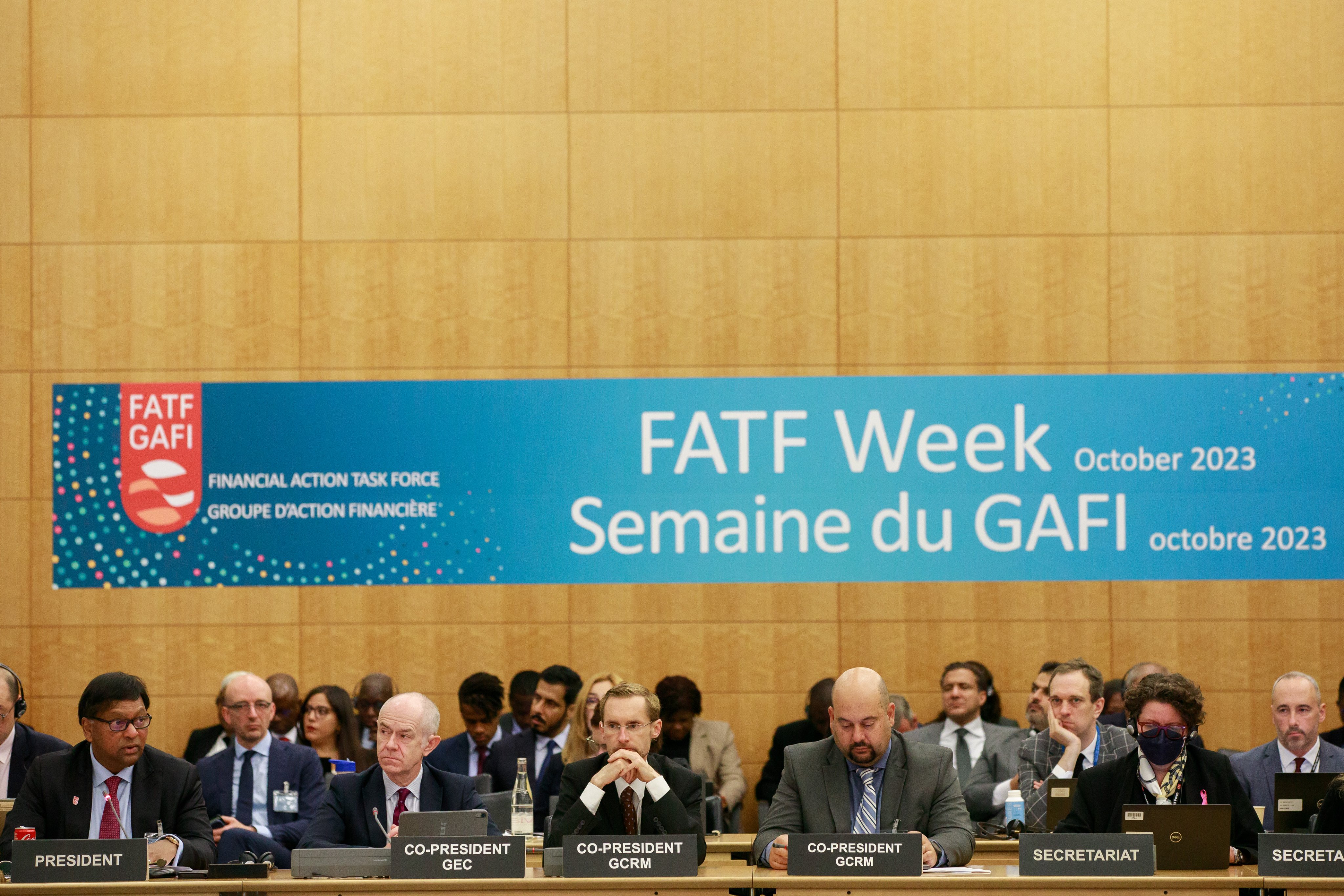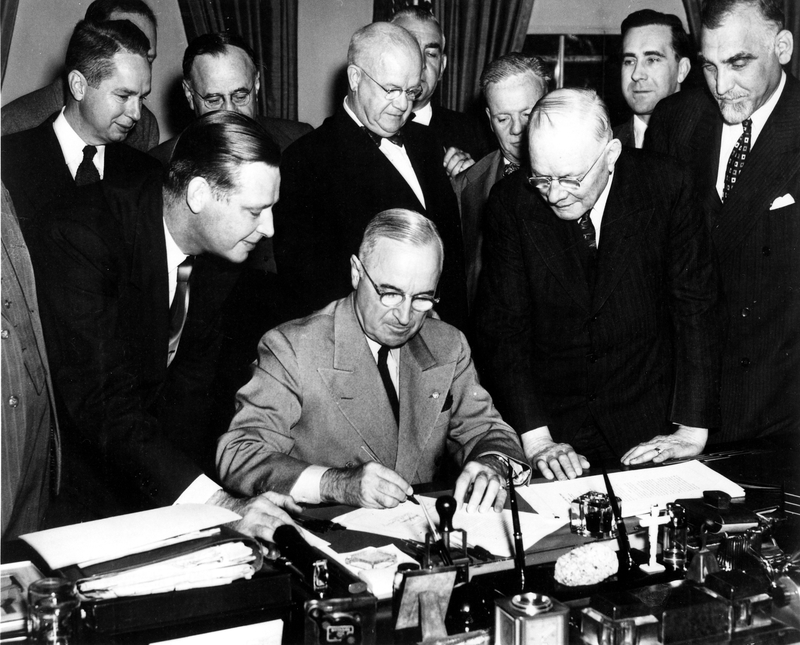
The gemstone industry, with its allure of exquisite jewels and precious stones, is not immune to the scrutiny of labor laws. This article delves into the multifaceted aspects of labor laws in the gemstone industry, shedding light on the challenges, regulations, and ethical considerations that define this intricate landscape.
Understanding The Gemstone Supply Chain - Unveiling The Journey From Mine To Market
In the vast and captivating world of gemstones, where each glittering jewel tells a unique story, it's essential to unveil the journey these precious stones undertake from the depths of the earth to the showcases of luxury retailers.
Before delving into the intricacies of labor laws, understanding the gemstone supply chainis paramount. This journey, from mining to cutting and polishing, not only transforms raw minerals into dazzling gemstones but also weaves a narrative of labor, ethics, and responsibility.
Mining - The Genesis Of Gemstones
The initial stage of the gemstone supply chain takes us to the heart of the Earth – the mines. Here, miners, often working in challenging conditions, extract raw gemstones from the depths below. The process involves physical labor, technical expertise, and a deep understanding of geology. Understanding the employment practices at this stage is crucial as it sets the tone for the ethical considerations that must thread through the entire supply chain.
Sorting And Trading - Navigating Global Markets
Once extracted, gemstones embark on a journey that spans continents. Sorting and trading hubs become focal points where gemstones are categorized, assessed for quality, and traded. Labor laws come into play not only at the extraction sites but also at these hubs, where fair businesspractices, ethical trading, and worker conditions need vigilant consideration.
Cutting And Polishing - Crafting Brilliance With Skilled Hands
The artistry of transforming raw gemstones into dazzling jewels lies in the hands of skilled artisans. Cutting and polishing require precision, expertise, and time-honored techniques. Labor laws governing the treatment of these artisans, often working in specialized workshops, play a crucial role in ensuring fair wages, safe working conditions, and the preservation of traditional craftsmanship.
Manufacturing - Assembling The Final Masterpiece
Beyond the artistry of cutting and polishing, the gemstone supply chain extends to the manufacturing of jewelry. Whether it's a bespoke piece or part of a mass production line, this stage involves additional labor considerations. Compliance with labor laws becomes pivotal in guaranteeing fair treatment, proper compensation, and adherence to ethical standards within the manufacturing sector.
Retail: The Final Showcase
The last leg of the journey brings gemstones to the retail stage, where they find their way into the hands of consumers. Retailers, both brick-and-mortar and online, must align with labor laws not only in their direct operations but also in their sourcing practices. Transparent supply chains and ethical retailing become key components, reflecting the industry's commitment to responsible business practices.
Child Labor Concerns In The Gemstone Industry - Unveiling The Shadows Of Exploitation
In the glistening world of gemstones, where beauty and rarity intertwine, a darker reality lurks in the shadows – the use of child labor. Despite global condemnation of the exploitation of children, reports reveal a disconcerting truth: in certain regions, the gemstone industry has become a stage for hazardous child labor. This section delves into the legal landscape surrounding child labor in the gemstone industry and examines initiatives designed to eradicate this deeply unethical practice.
The Global Condemnation Of Child Labor
Across borders and jurisdictions, labor laws universally denounce the use of child labor. The employment of children in hazardous conditions is not only morally reprehensible but also legally prohibited. The international community, through conventions such as the International Labour Organization's (ILO) Minimum Age Convention, sets standards to protect children from economic exploitation, ensuring their right to education, health, and a safe environment.
The Grim Reality - Child Labor In Gemstone Mining
Despite these global standards, the gemstone industry bears witness to a stark reality. In some regions, children are subjected to hazardous conditions in gemstone mines. This involves not only physical strain but also exposes them to health risks, depriving them of their right to a childhood and proper development. Understanding the extent of this issue is imperative to formulate effective strategies to combat and eradicate child labor in the gemstone supply chain.
Legal Stance On Child Labor In Gemstone Mining
Nations around the world have varying legal frameworks to address and combat child labor. This section explores the specific legal stances adopted by key gemstone-producing countries, shedding light on the enforcement mechanisms, penalties for violations, and the challenges in implementing and monitoring these laws.
Initiatives For Change - Eradicating Unethical Practices
Recognizing the urgency of addressing child labor in the gemstone industry, various initiatives have been launched to effect meaningful change. This part of the article highlights efforts by governments, non-governmental organizations (NGOs), and industry stakeholders to eradicate child labor. It examines the role of initiatives like the "No Child Left Behind" campaign and collaborative projects between governments, NGOs, and corporations to ensure the gemstone industry is free from the stain of child exploitation.
The Role Of Certification And Traceability
Certification schemes and traceability initiatives have emerged as powerful tools in the fight against child labor. This section explores how certification bodies, such as the Responsible Jewellery Council (RJC) and Fair Trade, contribute to ensuring that gemstones are sourced ethically. By examining the role of traceability in supply chains, we uncover how consumers and businesses can make informed choices to support ethical practices and reject gemstones tainted by child labor.
Anti-Money Laundering (AML) Regulations - Safeguarding Responsible Sourcing In The Jewelry Industry
In the intricate world of the jewelry industry, where the allure of precious metals and gems captivates consumers worldwide, responsible sourcing stands as a fundamental pillar. At the core of this ethical framework lies Anti-MoneyLaundering (AML) regulations, a robust set of guidelines rooted in the Bank Secrecy Act (1970) and the USA PATRIOT Act (2001). This article explores how AML regulations serve as the linchpin in preventing the illicit use of the US banking system for money laundering or terrorist financing, with a specific focus on their application to dealers in precious metals, precious gems, and jewelry.
The Origins - Bank Secrecy Act And USA PATRIOT Act
Enacted in 1970, the Bank Secrecy Act was the United States' initial response to the rising threat of money laundering. Its primary objective was to curtail financial crimes by imposing record-keeping and reporting requirements on financial institutions. The USA PATRIOT Act, introduced in the aftermath of the September 11 attacks in 2001, significantly expanded the scope of the Bank Secrecy Act. It aimed not only to combat money laundering but also to thwart the financing of terrorism, recognizing the critical role of the financial sector in these illicit activities.
AML Regulations - A Mandate For The Jewelry Industry
For dealers in precious metals, precious gems, and jewelry, adherence to AML regulations is not optional—it's a legal mandate. The regulations necessitate the establishment of comprehensive AML programs within their businesses. These programs are designed to identify and mitigate the risks associated with money laundering and terrorist financing. From conducting customer due diligence to implementing robust record-keeping and reporting mechanisms, AML programs in the jewelry industry play a pivotal role in upholding financial integrity and ethical business practices.
Customer Due Diligence - Unveiling The Identities Behind Transactions
A cornerstone of AML programs is customer due diligence, requiring jewelry dealers to unveil the identities behind their transactions. This involves verifying the identities of customers, understanding the nature of their transactions, and assessing the potential risks of money laundering or terrorist financing. Through stringent customer due diligence processes, the jewelry industry contributes to the broader efforts aimed at ensuring the financial system remains resilient against illicit activities.
Record-Keeping And Reporting - A Trail Of Transparency
Transparent record-keeping and reporting mechanisms form another vital component of AML regulations. Dealers in precious metals, gems, and jewelry are obligated to maintain meticulous records of transactions and report suspicious activities promptly. This creates a trail of transparency that not only safeguards businesses from unwittingly participating in illicit financial activities but also aids law enforcement agencies in their endeavors to combat money laundering and terrorist financing.
The Global Impact - A Unified Front Against Financial Crimes
While AML regulations find their roots in U.S. legislation, their impact extends globally. The interconnected nature of the jewelry industry demands a unified front against financial crimes. This section explores how international collaborations, such as the Financial Action Task Force (FATF), work to set global standards for AML practices, ensuring that responsible sourcing becomes a shared commitment across borders.
Working Conditions In Gemstone Mines - Navigating The Challenges Of Remote Terrains
Gemstone mining, a pursuit as old as civilization itself, takes us to the heart of the Earth's treasures. However, the allure of precious gems often conceals the challenging working conditions faced by laborers in remote and demanding terrains. This section scrutinizes the labor laws aimed at ensuring the safety, health, and overall well-being of these workers, underscoring the imperative of compliance with international standards.
The Remote Realities - Challenges Of Gemstone Mining Terrains
Gemstone mines are frequently nestled in remote and geographically challenging locations, presenting a unique set of challenges for the workforce. Remote terrains often mean limited access to essential services, communication, and emergency medical assistance. The inherent difficulties of these locations amplify the importance of stringent labor laws to safeguard the rights and well-being of gemstone miners.
Safety First - Labor Laws And Mine Safety Regulations
Ensuring the safety of gemstone miners is a paramount concern addressed by labor laws globally. This subsection explores the specific safety regulations implemented in gemstone mining, covering aspects such as the use of protective gear, ventilation systems, emergency evacuation plans, and the prevention of occupational hazards. Compliance with these regulations is not just a legal obligation but a moral imperative to protect those who extract the Earth's treasures.
Health And Well-being - The Human Side Of Gemstone Mining
Beyond safety concerns, the health and overall well-being of gemstone miners take center stage in labor laws. In this part, we delve into regulations that address healthcare access, hygiene facilities, and measures to prevent occupational health issues related to prolonged exposure to dust, chemicals, and physically demanding work. A comprehensive approach to health and well-being is essential to foster sustainable and humane working conditions in gemstone mines.
International Standards - A Global Commitment To Gemstone Miner Welfare
The gemstone industry's global nature necessitates adherence to international standards governing labor practices. This section examines how international organizations, such as the International Labour Organization(ILO) and the United Nations Guiding Principles on Business and Human Rights, contribute to shaping and promoting labor laws that transcend borders. The emphasis here is on fostering a shared commitment to upholding the dignity and rights of gemstone miners worldwide.
Challenges And Enforcement - Striking A Balance
While labor laws exist to protect gemstone miners, challenges in enforcement persist. This part of the article discusses the obstacles faced in ensuring compliance with labor regulations in remote mining areas. From insufficient oversight to economic pressures on mining operations, understanding these challenges is crucial for developing strategies to fortify the implementation of effective labor laws.
Foreign Corrupt Practices Act And Conflict-Minerals Provisions
In the intricate world of business and international trade, compliance with various laws is imperative to ensure ethical conduct and contribute to global stability. One such crucial law is the Foreign Corrupt Practices Act (FCPA), which holds significance in preventing corruption in business dealings on an international scale.
Foreign Corrupt Practices Act (FCPA) - Combating Corruption Across Borders
The Foreign Corrupt Practices Act, a cornerstone of ethical business practices, prohibits the offering, payment, or promise to pay money or anything of value to foreign officials to influence business decisions. Enforced by both the Securities and Exchange Commission (SEC) and the Department of Justice, the FCPA aims to promote transparency, integrity, and fair competition in the global marketplace. Understanding and adhering to the FCPA is essential for businesses engaged in international transactions to avoid legal repercussions and foster a culture of ethical conduct.
SEC Enforcement - Beyond FCPA To Conflict-Minerals Provisions
While the SEC plays a crucial role in enforcing the FCPA, its responsibilities extend to other significant areas, including the conflict-minerals provisions of the Dodd-Frank Act. This provision mandates that publicly traded companies disclose their use of specific minerals—gold, tin, tantalum, and tungsten—sourced from the Democratic Republic of Congo (DRC) or its neighboring countries. The rationale behind this rule stems from concerns that the exploitation and trade of these conflict minerals may be funding armed groups, thereby contributing to conflicts and humanitarian crises in the DRC region.
Addressing Humanitarian Concerns
The conflict-minerals provisions of the Dodd-Frank Act address a critical nexus between business practices and humanitarian crises. The exploitation of minerals by armed groups in the DRC region has been linked to funding conflicts, leading to devastating consequences for the local population. By requiring disclosure, the SEC aims to create transparency in the supply chain, allowing consumers and stakeholders to make informed choices that contribute to responsible and ethical business practices.
Ongoing Commitment To Compliance
For companies engaging in international business, adherence to the FCPA and conflict-minerals provisions is not merely a legal obligation but a commitment to responsible corporate citizenship. By upholding these regulations, businesses play a role in fostering transparency, curbing corruption, and contributing to efforts aimed at alleviating humanitarian crises in conflict-prone regions.
Federal, State & Local Laws In America
Employers in the United States must navigate a comprehensive legal landscape encompassing federal, state, and local laws that govern the workforce. Understanding and adhering to these laws is essential for fostering a fair and compliant workplace environment. Key federal laws that employers should be acquainted with include:
- Title VII of the Civil Rights Act
- Americans with Disabilities Act (ADA)
- Age Discrimination in Employment Act (ADEA)
- Genetic Information Nondiscrimination Act (GINA)
- Equal Pay Act
- National Labor Relations Act (NLRA)
- Family and Medical Leave Act (FMLA)
- Fair Labor Standards Act (FLSA) covering minimum wage and overtime pay
This list is by no means exhaustive, as there are numerous other federal laws that may apply depending on the nature of the business and its workforce. Additionally, employers should be aware of relevant state and local laws that may provide additional protections or requirements for employees. It is crucial for employers to stay informed and seek legal counsel to ensure compliance with the ever-evolving legal framework governing employment in the United States.
Labor Laws In The Gemstone Industry - FAQs
What Are The Responsibilities Of A Jeweler?
- Design and Fabrication:Conceptualizing and creating intricate jewelry designs, fabricating jewelry using various metals, gemstones, and other materials.
- Repair and Restoration:Repairing damaged jewelry, including resizing rings, fixing clasps, soldering, and restoring antique or worn pieces to their original glory.
- Customer Interaction:Assisting customers in selecting or customizing jewelry based on preferences, providing expertise on gemstones, metals, and design options.
- Gemstone Setting:Skillfully setting gemstones into jewelry pieces using various techniques, ensuring stones are secure and aesthetically pleasing.
- Quality Control:Inspecting finished pieces for quality and craftsmanship, and addressing any defects or issues before finalizing a sale.
- Knowledge of Trends:Staying informed about current jewelry trends and styles, offering contemporary designs while respecting traditional craftsmanship.
- Business Operations:Managing inventory, pricing, and sales transactions, maintaining a clean and organized workspace.
What Category Does Jewelry Fall Under?
In the realm of personal and fashion accessories, jewelry emerges as a distinctive category. This encompasses a spectrum of styles and forms, from fine jewelry to costume jewelry, and even artisanal or handmade creations. For more insights into the legal aspects of gemstones and jewelry, you can explore Law NewsNetwork's article on lucky gems here.
What Skills Do You Need To Be A Jeweler?
- Technical Skills:Proficiency in jewelry fabrication techniques, including soldering, casting, and engraving, and gemstone setting skills, including prong, bezel, and pave settings.
- Design and Creativity:Artistic flair for designing unique and aesthetically pleasing jewelry, ability to translate ideas into tangible, marketable pieces.
- Attention to Detail:Precision and attention to detail in all aspects of jewelry creation, ensuring accurate measurements, stone alignment, and finishing.
- Customer Service:Strong communication skills for effectively interacting with customers, understanding customer preferences, and providing personalized recommendations.
- Knowledge of Materials:In-depth knowledge of metals, gemstones, and other materials used in jewelry making, understanding the properties and characteristics of different materials.
- Repair and Restoration Skills:Proficiency in jewelry repair techniques, the ability to restore and refurbish old or damaged pieces.
- Business Acumen:Basic understanding of business operations, pricing, and inventory management, knowledge of market trends and customer preferences.
- Continuous Learning:Willingness to stay updated on industry trends, techniques, and new technologies, participating in workshops or courses to enhance skills and knowledge.
Being a jeweler requires a unique blend of artistic vision, technical expertise, and customer-oriented skills to create, repair, and showcase the beauty of jewelry while meeting the diverse needs and preferences of customers.
Conclusion
In conclusion, the spotlight on working conditions in gemstone mines illuminates the need for robust labor laws that go beyond legality to prioritize human rights and well-being. By addressing safety, health, and overall working conditions, the gemstone industry can pave the way for ethical mining practices. The commitment to compliance with international standards ensures that the brilliance of gemstones doesn't come at the cost of the dignity and welfare of those who unearth them from the Earth's embrace.





